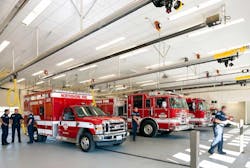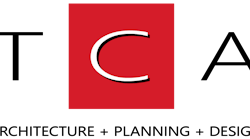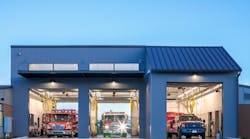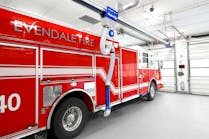Confronting Fire Department Diesel Exhaust Exposure Concerns—Part 3: Determining Exposure Sources
In Part 3 of this 6-part series, we examine the first and perhaps most critical step in managing exposure to diesel exhaust and carcinogenic/chemical hazards in your facilities. The initial evaluation of your operation should consider your safety management systems, as discussed in Part 2, and should also address the physical layout and condition of your station, the age and condition of your apparatus, and concerns expressed by your firefighters, union or community.
The late comic Irwin Corey once stated, “If we don’t change direction soon, we will end up where we are going.” Well, we have finally changed direction, in the sense that firefighter safety and contaminant awareness is one of the top concerns not only of responders but also of decision makers. However, given that we’ve changed direction in our awareness, how do we go further to change the direction of our decisions and actions and their consequences? Where do we go with our increased awareness?
Recognizing long-term problems
We spoke with a West Coast captain who recognizes that research studies have shown that, just because we can’t see something doesn’t mean that it might not hurt us in the long-term. He told us that the bottom line is that we want to extend the lives of firefighters and it’s a disservice to our employees if this is not a primary focus.
So, to make this a primary focus, let’s begin by conducting a thorough initial evaluation of your safety management program and of your operation overall. In terms of your safety management program, ask yourself, “Have we clearly identified the responsibilities of management and line personnel, as well as program administrators and support staff? Is our safety management program a line-owned and driven program?” If not, then that is a necessary starting point.
Next, ask “Does our safety program address diesel exhaust and other chemical hazards not only during fire response but in the station, in other settings, and under more varying conditions?”
- Have we built standards for chemical safety into our equipment maintenance procedures, fire overhaul procedures, training exercises, and management of hoses, and personal protective equipment (PPE), etc.?
- Do we treat chemical hazards, outside of the fire response, as equal in priority to other kinds of safety and health hazards?
- Have we done any air testing for diesel exhaust or other airborne carcinogens to which our firefighters may be exposed, in the station and in the field, with an emphasis on those times when they are not wearing SCBA protection?
Also consider whether your safety management program includes training that is designed not only for compliance with OSHA (Occupational Safety and Health Administration) regulations, but to ensure that applicable standard procedures are understood and applied.
- Is our training designed to minimize conditions and/or incidents that could lead to long-term health consequences, as well as short-term injuries?
- Do we take steps, such as learning verification and periodic audits and/or inspections, to confirm that our training is being applied correctly and consistently?
- Do we investigate incidents, even if they have not resulted in a reportable injury, which could impact chemical safety and the exposure of firefighters to diesel exhaust, other carcinogens, and other hazardous chemicals?
- Does our planning consider the long-term solutions to diesel exhaust, carcinogens and other chemical exposures?
In recent years, every client we talked with was concerned with hot zones, cross-contamination, proper use of personal protective equipment, managing protective equipment within stations, and figuring out how best to mitigate exposures. When it comes to implementing long-term solutions, one challenge is that most people do not have enough time to research and apply the ever-changing avalanche of information that is being generated. A Mountain State Chief recently asked, “What are the real strengths and weaknesses of exhaust systems, hoses, fans, stationary filters, vehicle mounted filters, etc.?” Great question! But before you can make appropriate decisions on these issues, you must first consider your apparatus and facility.
Before examining the strengths and weaknesses of your facility, ask yourself, “What goes into a station that could be a cause for concern?” Unfortunately, the quick answer is many things. But breaking it down, we can start to look for—and find—solutions.
Is the cause for concern part of the station? For instance, is it a carcinogenic or otherwise toxic building material contaminant, such as asbestos or lead? Or is it:
- A chemical that you choose to bring into the station, such as spray paint?
- Something brought in unknowingly or as a bi-product of equipment operation, such as diesel exhaust from station apparatus, gear or hoses contaminated by carcinogens present on a fire response or other emergency scene, or carbon monoxide associated with a compressor or gas-fired tool?
- Even something possibly related to the neighborhood in which the station is located, and nearby environmental sources of diesel exhaust, such as a major highway?
In terms of chemicals in the workplace, there are many possible sources of exposure. Diesel- and gas-powered apparatus and tools, cleaning agents and adhesives, high-volume copiers, volatile organic compounds found in spray paints, contaminants associated with building materials, chemicals brought in from a call, and even carbon monoxide from cooking that tasty grilled meat on the station’s gas-fired barbecue could all be a cause for concern! And although not a chemical per se, we may need to consider molds that may be associated with wet hoses and turnout gear.
Finding exposure sources
Make a list of possible sources of exposure in your station. One excellent starting point is the National Institute for Occupational Safety and Health (NIOSH) page on firefighters, which includes not only an extensive list of NIOSH studies and publications, but also other “Fire Fighter Resources.” Go to https://www.cdc.gov/niosh/firefighters/.
Another good source of information related to hazardous chemicals is the Safety Data Sheet (SDS) for each chemical you purchase. Of course, this is only applicable to chemicals that you purchase, but it gives you useful information on the chemical product, including whether it has been identified as carcinogenic. (SDS will be discussed in more detail in Part 5 of this series.)
For each source of concern that you identify, ask yourself:
- How frequent is the use or exposure? How serious is the impact?
- Is it necessary? Must it be done or used?
- Can it be done outdoors instead of indoors? Or in the bay instead of the living quarters?
- And what can we do to isolate or contain it?
Then catalogue equipment of concern and the kinds and size of apparatus you have, along with age and condition. Make a comprehensive spreadsheet of everything you know about the apparatus you currently have, including equipment-specific filtration if you have any, problems with equipment failure and/or servicing of equipment, parts inventories, reserve apparatus, equipment-related delays in service calls, equipment replacement schedules, etc.
Consider also your facilities. Ask yourself, “What are the strengths and weaknesses in our facility?”
- Again, for each facility make a spreadsheet of everything you know about that facility that may be related to firefighter chemical safety, including bay size and layout, facility age and construction, apparatus location, ventilation and fan capacities and filtration technologies, age of bay ventilation systems and system maintenance issues, parts inventory, ease of use of ventilation technology, and firefighter habits such as propping doors that may indicate a problem, etc.
- Consider the handling of hoses and turnout gear, both from the perspective of cross contamination and also for possible mold-related issues.
- Look at the ventilation in the living area. What kind of mechanical system does your facility have? Is it positively pressured relative to the bay area?
- Where is intake air coming from for each space throughout the station? Are potential contaminants being pulled into spaces where they shouldn’t be?
And finally, make a list of questions and concerns that have been raised by your employees, union, and community related to chemical safety and firefighter health. Add any questions of your own that may not have been already addressed in the summaries you have prepared.
In Part 4, we will look in detail at your options related to apparatus, facility design and ventilation, and the handling of hoses and turnout gear. We will consider how they relate to the minimization of chemical concerns, especially diesel exhaust and fire-related carcinogens. We will discuss their relative strengths and weaknesses, challenges and costs.
Related Articles:
- Confronting Fire Department Diesel Exhaust Exposure Concerns - Part 1
- Confronting Fire Department Diesel Exhaust Exposure Concerns - Part 2: Taking a Systems Approach
- Confronting Fire Department Diesel Exhaust Exposure Concerns—Part 3: Determining Exposure Sources
- Confronting Fire Department Diesel Exhaust Exposure Concerns - Part 4: Evaluating Exposure Pathways
- Confronting Fire Department Diesel Exhaust Exposure Concerns - Part 5: Maximizing Your Resources
- Confronting Fire Department Diesel Exhaust Exposure Concerns - Part 6: Air Testing & Communication of Exposure Results
- Confronting Turnout Gear, Equipment Contamination in the Fire Station










